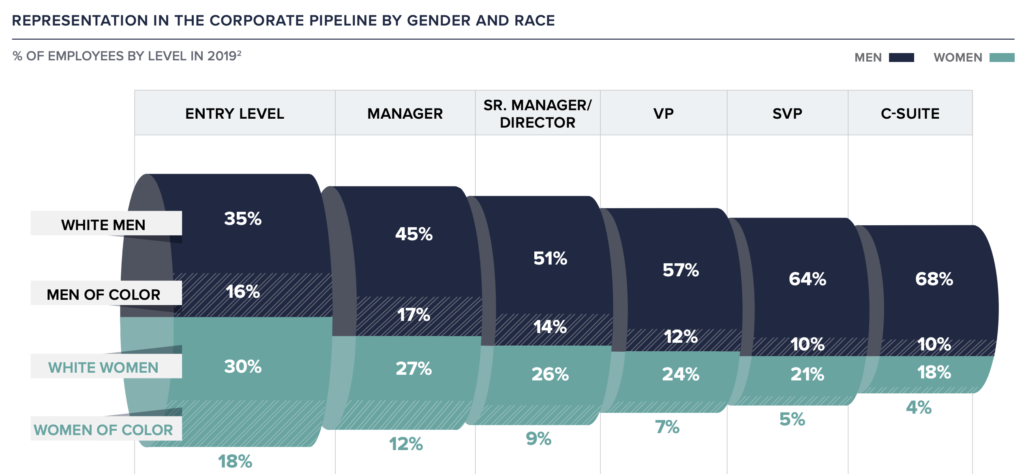For many years people referred to the glass ceiling as the limiting factor keeping women out of the C-suite. Recent research suggests this might not be the case.
So what’s the reason that women remain underrepresented in leadership roles?
According to the latest research, it’s the broken rung.
The term “broken rung” was coined following a five-year study by McKinsey & Company and Sheryl Sandberg through LeanIn.Org. Data from 590 companies showed that women in entry-level jobs were less likely to be promoted to the first level of managerial positions. This, in turn, limits the number of women available for promotion into higher levels of management and dramatically shrinks the diverse talent pool available.
The jarring figures outlined in this report showed that for every 100 men who become managers, only 72 women get the same positions. As a result, women tend to be more heavily represented in entry-level jobs. The report finally explains why, despite our best efforts in diversity, fewer women (38 percent) hold managerial positions than men (62 percent).
The report also found that women of color are particularly susceptible to the broken rung, dropping from 18% of entry-level positions to a mere 4% of C-Suite positions.

Image taken from Women in the Workplace 2019.
The impact of Covid-19 on the broken rung
Although the pandemic affected everyone, working mothers were hit particularly hard and left the workforce in unprecedented numbers. Of those still in the workforce, an additional 25 percent of women are thinking about leaving the workforce or downshifting to lower positions.
The price of the broken rung
Diversity, including gender diversity, has an enormous return on investment (ROI) for companies, and it remains in their best interest to retain women and bring them into leadership roles.
Read our detailed report on how diversity improves your company’s performance and ROI.
The impact of a diverse workforce starts before being hired. 67 percent of candidates consider diversity and inclusion to be a key influence in their decision to apply to your company and accept your job offers. Ensuring that your workforce is diverse will help attract talented employees.
Diverse and inclusive organizations also have a better financial performance, as reflected by their revenue and profits. Diverse companies observe a 230 percent increase in cash flow. Organizations with diverse management experience a 19 percent increase in revenue. Gender diversity is also key as it increases the likelihood of outperforming profitability as well as increasing value creation.

Fixing the broken rung
To fix the broken rung, companies need to change how they hire and promote women. For starters, there’s often a disconnect between employees and HR leaders on the criteria used for promotion. The broken rung report clearly illustrated that companies need to clearly communicate what their expectations are, not just in job tasks, but in interactions with others.
Companies also need to look closely at whether or not their diversity efforts are being hindered by common diversity bottlenecks.
The report also advises companies to establish gender diversity as a critical objective, similar to other business objectives. This might be in the form of having a stipulated quota for women in management, and then adjusting hiring pipelines to ensure that they contain enough diversity to give women a statistical chance of being hired.
Finally, companies have to address the issue of unconscious bias. Unconscious bias can show up throughout the talent acquisition and talent management process. That is why it’s more important than ever to empower your team with ethical AI tools that can help them make better, more data-driven decisions.
Request a demo to learn more about how Censia can help you achieve your diversity goals.



